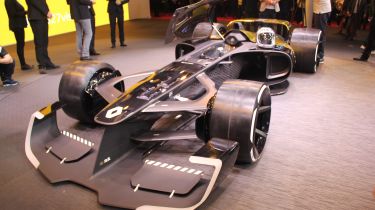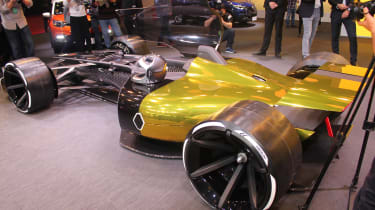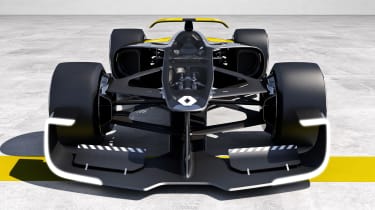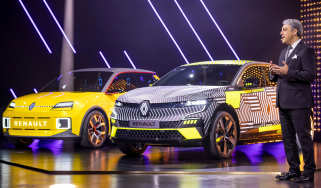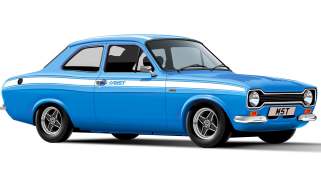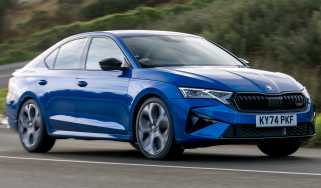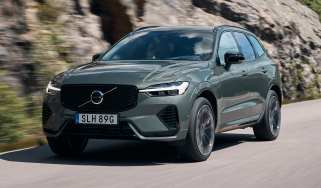Renault R.S. 2027 Vision concept predicts F1's future
Renault's R.S. 2027 Vision concept car will show the future of F1 cars at the Shanghai Motor Show
Renault has set its designers loose to come up with a vision for how Formula One racing cars could look in 10 years’ time - and the result is the R.S. 2027 Vision, which has been unveiled at the 2017 Shanghai Motor Show.
The R.S. 2027 Vision is meant to improve the F1 spectacle for the fans - so it gets a transparent cockpit that would allow supporters a better view of the driver working behind the wheel. The driver’s helmet is also transparent, allowing fans to potentially see the faces of the sport’s top stars as they compete.
• Best concept cars at the 2017 Geneva Motor Show
The show car’s bodywork is 3D-printed and, Renault claims, tailored to the shape of the driver’s body. It incorporates LED-based information displays in the wheels, allowing the car to provide relevant information - its position in the race, or its remaining reserves of energy - every time it passes the grandstands. Telemetry data would also be available to spectators, giving them a better understanding of the action.
The concept’s powerplant is based on a turbocharged V6 engine - a development of the current set-up in F1. However, the R.S. 2027 gets a smaller fuel tank (60kg compared with today’s 105kg) and batteries with a higher energy density than the current F1 spec. They power a pair of 250kW electric motors that have enough shove for the car to be driven in all-electric mode during suitable parts of the race (such as the warm-up lap, safety car periods and pits activity).
The R.S. 2027 is purely a concept for now. But F1 is under new ownership and the sport’s bosses have vowed to make improvements to the spectator experience. Renault’s show car is a clear statement of intent from the French brand on how it would like the sport to develop over the next decade.
Beyond the physical concept, the company suggests that the F1 weekend could incorporate a shorter race, split into a longer segment and then a ‘final sprint’, and a rookie night race for up-and-coming drivers that could be held on the Friday evening of every race weekend. It also proposes standardised components that could be shared across all teams, cutting the costs of entry to the sport for new manufacturers.
What would you like to see from F1 in ten years' time? Let us know below.
Find a car with the experts

